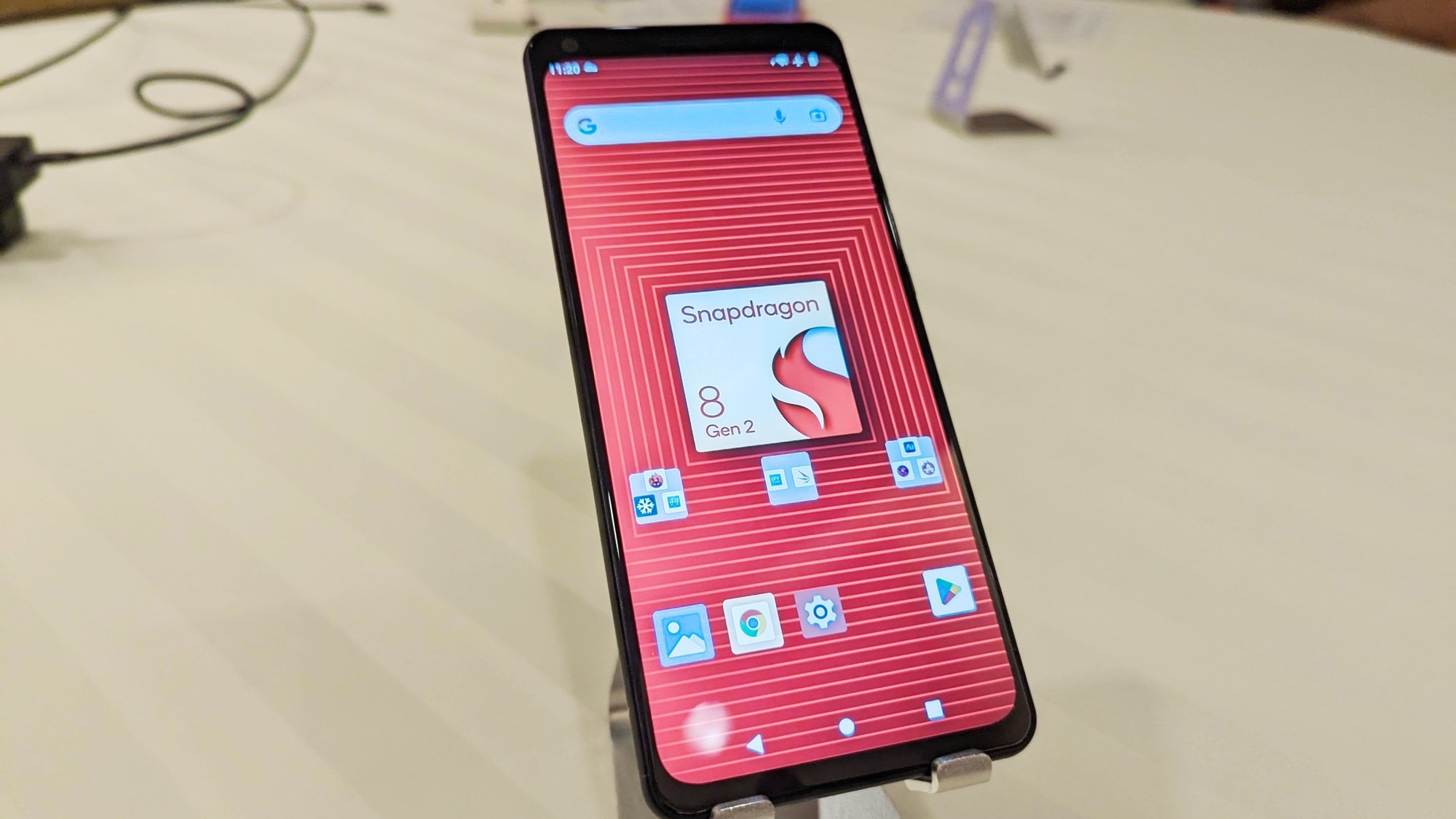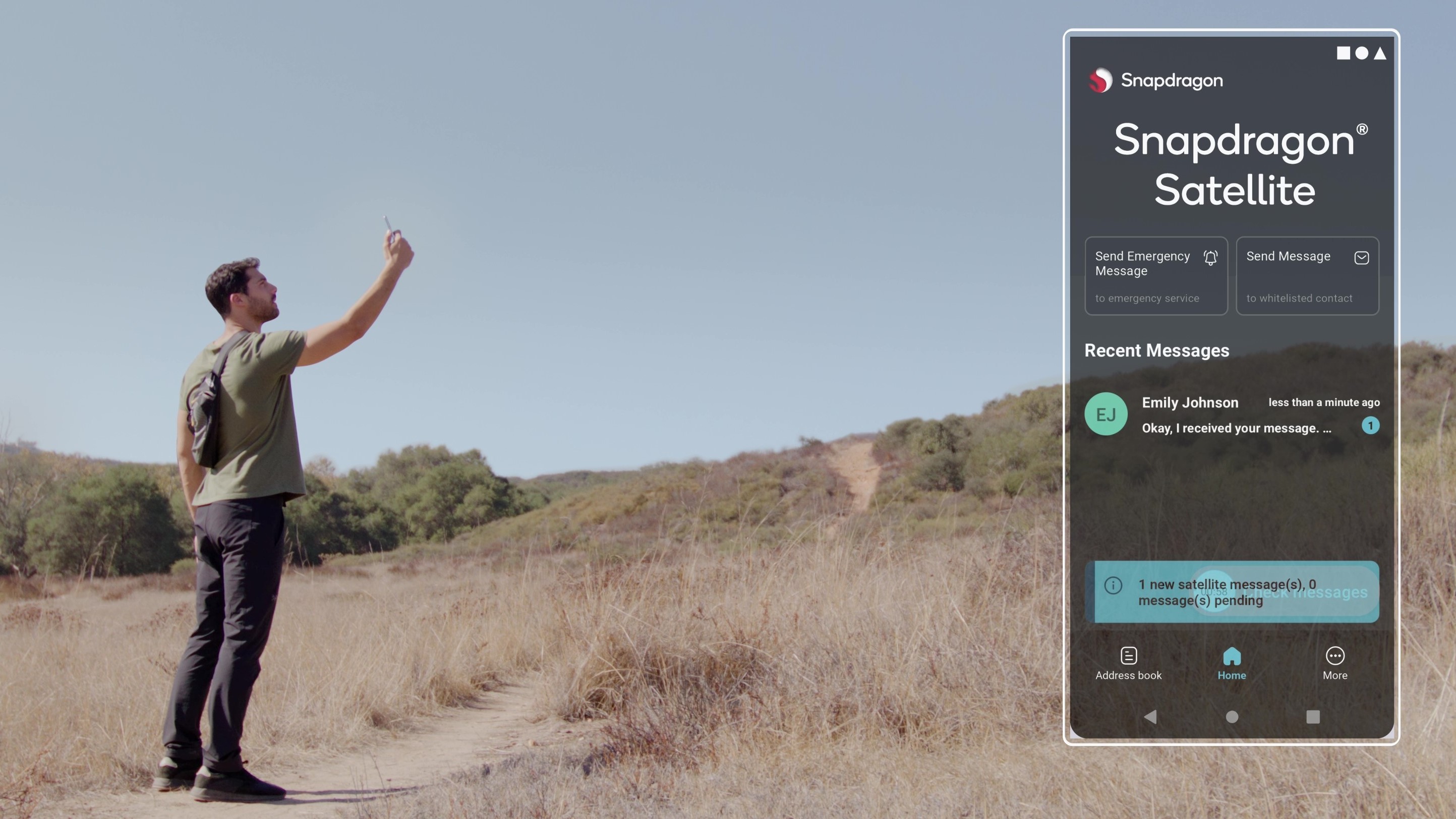Android is getting an answer to iPhone 14's Emergency SOS via satellite, thanks to Qualcomm
Qualcomm Snapdragon Satellite takes the Apple Emergency SOS service and goes a step further

Update: Snapdragon Satellite is being shut down in December 2023. Read more here, but the original article follows.
Upcoming Android phones are going to get their own version of the iPhone 14's Emergency SOS via satellite feature in the form of Qualcomm's new Snapdragon Satellite. But this feature could do more than just provide emergency coverage.
Announced today (January 5) at CES 2023, chip designer Qualcomm is partnering with the Iridium satellite network and Garmin Response emergency rescue services to offer satellite connectivity for Android phones. The rollout will start with devices using the Snapdragon 8 Gen 2 flagship chipset in the second half of this year, in North American and European regions.
Like Emergency SOS via satellite — a feature available on iPhone 14 series models — Snapdragon Satellite promises to let you send emergency messages anywhere in the world with a view of the open sky, thanks to Qualcomm's new X70 5G modem that also allows for satellite connectivity.
A demo video of the service shows a lost user holding their smartphone up to the sky to track the position of a passing satellite to connect and message with a contact. This is done in a dedicated Snapdragon Satellite app, although we'd hope there will be integration with regular messaging apps for ease of use, too.

Snapdragon Satellite supports two-way emergency messaging, as Apple's equivalent service does, but it's intended for wider usage than that. Qualcomm's selling this as a way to send regular texts and other messages in remote areas. That could have a huge impact on users who struggle for cell connections while traveling, or who live way off-grid.
One unanswered question is if Qualcomm or Android phone makers will charge extra for enabling this service on phones. Apple's promised two free years of Emergency SOS via satellite coverage for iPhone 14 owners, which hints that after that elapses, you'll have to pay to access the service. It's unfair to lock safety features behind a paywall after already buying a new device, but like Apple, there's nothing stopping Qualcomm from demanding a fee for it.
Sign up to get the BEST of Tom's Guide direct to your inbox.
Get instant access to breaking news, the hottest reviews, great deals and helpful tips.
Qualcomm also has ambitions for this tech beyond smartphones too, such as for laptops, tablets and vehicles. While you're likely to have your phone with you anywhere, there are times when you'll be using different devices or when you're in a car. Having this feature built into products beyond phones will improve messaging on other platforms, as well as open up other potential features.
The first Snapdragon 8 Gen 2 phones are already arriving, such as the OnePlus 11 Pro; more rumored devices like the Samsung Galaxy S23 series are not that far behind. We'd assume these models will get Snapdragon Satellite enabled on them when Qualcomm launches the service, so if you plan to buy these phones, keep an eye out for when this bonus upgrade arrives.
If you want more announcements from the world's biggest tech show, check out our CES 2023 hub for the latest news.

Richard is based in London, covering news, reviews and how-tos for phones, tablets, gaming, and whatever else people need advice on. Following on from his MA in Magazine Journalism at the University of Sheffield, he's also written for WIRED U.K., The Register and Creative Bloq. When not at work, he's likely thinking about how to brew the perfect cup of specialty coffee.
